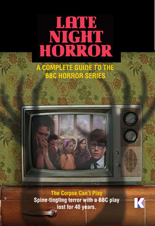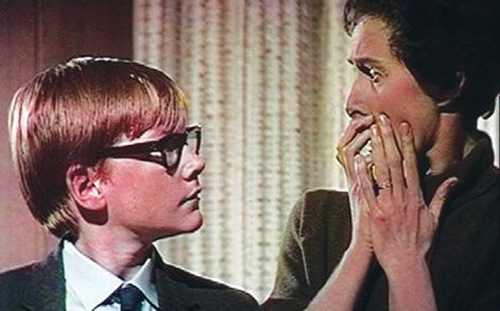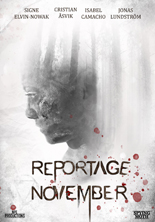
 Lasting all of six episodes, Late Night Horror was Britain’s first TV horror anthology to be broadcast in color. Unfortunately, because the BBC regularly wiped tapes, only one episode survives. Fortunately, that ep, “The Corpse Can’t Play,” is a fantastic example of the modern macabre, where the monsters are human.
Lasting all of six episodes, Late Night Horror was Britain’s first TV horror anthology to be broadcast in color. Unfortunately, because the BBC regularly wiped tapes, only one episode survives. Fortunately, that ep, “The Corpse Can’t Play,” is a fantastic example of the modern macabre, where the monsters are human.
Opening with a round of musical chairs, the kid’s birthday party setting belies where the next 25 minutes take you. The birthday boy, Ronnie (Frank Barry, Dr. Terror’s House of Horrors), is a spoiled brat. Arriving late to the celebration — because he wasn’t invited — is class outcast Simon (Michael Newport, The Naked Runner), who’s bespectacled, well-mannered and not accepted.

I need not tell you kids are cruel; Ronnie is especially hateful toward Simon, twisting the knife (so to speak) over the latter’s father’s current place of residence: six feet under. Where prolific BBC director Paddy Russell (Z Cars, The Moonstone, Doctor Who, et al.) goes from there won’t be revealed here. That said, even with Chekov’s drama theory top of mind, the denouement still may surprise you in how much a 50-plus-year-old episode is able to revel in such grisliness. And if not, hopefully the show’s unsettling title sequence wins you over.
“The Corpse Can’t Play” comes as bonus DVD with Colin Cutler and Steve Rogers’ book, Late Night Horror: A Complete Guide to the BBC Horror Series. The paperback features wavering typefaces and point sizes as it delves into what is assuredly the most complete history of the show, both now and in the future. The disc alone justifies a purchase. —Rod Lott







 After a woman is found dead in the forest, with her newborn nowhere in sight, an intrepid journalist (Signe Elvin-Nowak) and crew go searching for the truth. After all, over the last seven years, this female corpse is hardly the first to turn up in these woods.
After a woman is found dead in the forest, with her newborn nowhere in sight, an intrepid journalist (Signe Elvin-Nowak) and crew go searching for the truth. After all, over the last seven years, this female corpse is hardly the first to turn up in these woods. 